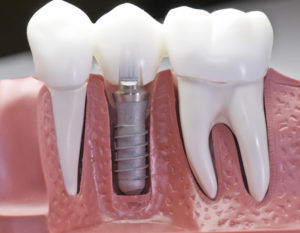May 21, 2018
Dental implants are a common way to replace missing teeth and enhance the appearance of your natural smile. If you are getting implants, your oral surgeon may first need to perform a bone graft.
What Is a Bone Graft?
In a dental implant procedure, the oral surgeon screws a metal post into the jawbone to act as a root for the new tooth. A bone graft is performed when this bone is too thin or soft to properly support the implant.
How Is a Bone Graft Performed?
Dr. Steele first takes a piece of bone from another part of the body, commonly the hip, or uses an animal bone or artificial grafting material. This piece is grafted onto the existing jawbone. Over a period of several months, the graft fuses with the bone, providing the strength needed to support an implant.
Does Bone Grafting Hurt?
Bone grafting surgery is usually performed with a local or general anesthetic to reduce pain and anxiety. Side effects post-surgery are similar to those of any other dental procedure. Bruising, swelling, and bleeding may occur, but typically subside within a few days. Patients are also instructed to avoid hard, sticky foods until the mouth heals. Pain can typically be managed with over-the-counter medications.
What Happens After the Bone Graft?
After the jawbone has been sufficiently fortified, the oral surgeon will perform the rest of the implant surgery. The gums are cut to reveal the jawbone and holes are drilled into the bone. The implant post is then secured in place. Another healing period begins, as the jawbone slowly grows into the implant. This healing typically takes a few months to complete. Then an abutment, the piece that connects the post to the artificial tooth, is placed. Finally, the new tooth is attached.
While bone grafting can seem intimidating, it is a relatively simple procedure. If you are considering dental implants, contact our office in Coppell, TX. Let us help you improve your beautiful smile!
